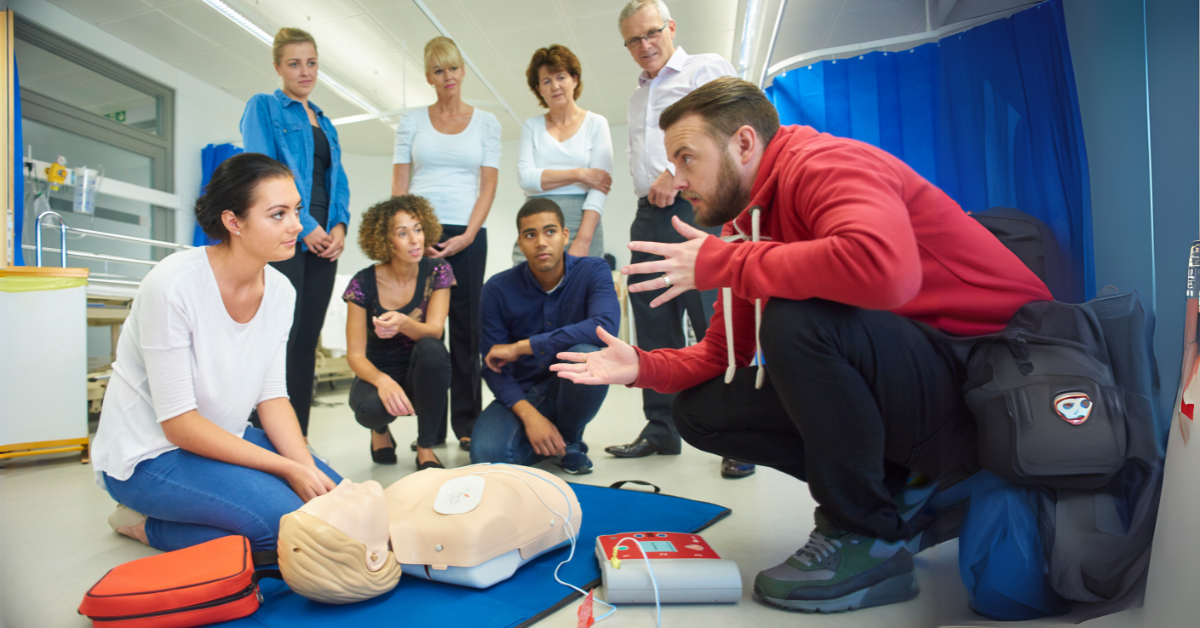Beginner

Level 2 Certificate in First Aid and CPR for Emergency Responders
Level 2 Certificate in First Aid and CPR for Emergency RespondersCourse OverviewThe Level 2 Certificate in First Aid and CPR for Emergency Responders is designed to equip learners with essential life-saving skills, focusing on first aid and CPR techniques specifically tailored for emergency responders. This certificate provides participants with the knowledge and practical skills needed to assess, manage, and treat injuries or medical conditions in emergency situations. The course is ideal for individuals who work in high-risk environments or roles where providing immediate care to injured individuals is required, such as emergency responders, security personnel, healthcare workers, or members of an emergency response team.Benefits
Who is This Designed For?This certificate is ideal for:
- Gain essential first aid and CPR skills for handling medical emergencies.
- Learn how to assess and manage injuries, illnesses, and medical conditions in emergency situations.
- Understand how to perform CPR and use an Automated External Defibrillator (AED).
- Be prepared to respond confidently and competently in emergency scenarios, potentially saving lives.
- Build a strong foundation for further qualifications in emergency medical care or healthcare support.
- Recognize and assess common medical emergencies, including trauma and medical conditions.
- Provide immediate first aid treatment for injuries, including cuts, burns, fractures, and bleeding.
- Understand and perform CPR for adults, children, and infants.
- Use an Automated External Defibrillator (AED) correctly in cases of cardiac arrest.
- Respond to common medical conditions, including heart attacks, strokes, seizures, and choking.
- Assess the need for medical help and ensure proper transportation of injured individuals to medical professionals.
- Introduction to First Aid and Emergency Care
- The principles of first aid and emergency care.
- Legal and ethical considerations when providing first aid.
- The role and responsibilities of first aid responders in an emergency situation.
- Understanding the primary survey: Danger, Response, Airway, Breathing, Circulation (DRABC).
- Assessing and Managing Medical Emergencies
- Recognizing signs and symptoms of medical emergencies (e.g., heart attacks, strokes, and asthma attacks).
- Conducting a thorough assessment of a casualty: ABCDE (Airway, Breathing, Circulation, Disability, Exposure).
- Prioritizing care based on the severity of the emergency.
- Managing and stabilizing casualties until medical help arrives.
- First Aid for Injuries
- Treating cuts, wounds, and bleeding: controlling bleeding, applying dressings, and bandages.
- First aid for burns and scalds: cooling, covering, and protecting the injured area.
- Managing fractures and sprains: immobilizing injuries and reducing pain.
- Handling and preventing infection in open wounds.
- CPR and Defibrillation
- Performing CPR for adults, children, and infants using the latest guidelines.
- Recognizing signs of cardiac arrest and initiating CPR effectively.
- Using an Automated External Defibrillator (AED): when and how to use it.
- The importance of early defibrillation in cardiac arrest survival rates.
- First Aid for Medical Conditions
- Responding to breathing difficulties, such as asthma attacks and hyperventilation.
- Managing heart attacks, strokes, and seizures: identifying symptoms and providing first aid until emergency services arrive.
- Choking: identifying the signs and performing abdominal thrusts (Heimlich maneuver).
- Managing diabetic emergencies, allergic reactions, and fainting.
- Safety, Hygiene, and Legal Considerations
- Infection control: hand hygiene, using gloves, and sanitizing equipment.
- Personal protective equipment (PPE) for emergency responders.
- Understanding your legal rights and responsibilities when providing first aid.
- Record-keeping and reporting procedures after administering first aid.
| Unit Title | GLH | TQT | Credit | Assessment Type |
| Introduction to First Aid and Emergency Care | 7 | 14 | 1.5 | MCQ-based |
| Assessing and Managing Medical Emergencies | 9 | 18 | 2 | MCQ-based |
| First Aid for Injuries | 9 | 18 | 2 | MCQ-based |
| CPR and Defibrillation | 9 | 18 | 2 | MCQ-based |
| First Aid for Medical Conditions | 9 | 18 | 2 | MCQ-based |
| Safety, Hygiene, and Legal Considerations | 7 | 14 | 1.5 | MCQ-based |
- Emergency responders, paramedics, security personnel, and safety officers.
- Individuals working in high-risk environments, such as construction sites, factories, and healthcare facilities.
- Healthcare professionals seeking to enhance their emergency response skills.
- Members of first aid teams, emergency response teams (ERT), or volunteer organizations.
- Anyone seeking to gain certified first aid and CPR skills for personal or professional use.
- Take on roles such as Emergency Medical Technician (EMT), First Aid Trainer, or Medical Responder.
- Enhance their qualifications in emergency care, health and safety, or healthcare support.
- Apply for jobs in industries that require immediate first aid and emergency medical response.
- Advance to more specialized qualifications, such as advanced first aid or paramedic training.
- Expert-Led Learning: Learn from experienced professionals with practical knowledge in emergency care and first aid.
- Hands-On Training: Participate in practical exercises and simulations to reinforce theoretical knowledge and gain confidence in performing first aid and CPR.
- Industry-Recognized Certification: Receive a recognized qualification that enhances your ability to respond to emergencies and care for those in need.
- Real-World Application: Apply your skills in realistic scenarios and prepare for handling medical emergencies in various environments.
Qualification Profile
Qualification Title: Level 2 Certificate in First Aid and CPR for Emergency Responders
Level: 2
Type: Certificate
Total Qualification Time (TQT): 100 hours
Guided Learning Hours (GLH): 50 hours
Credit Value: 10 credits
Assessment Method: MCQ-based
Grading: Pass/Fail
Delivery Mode: Classroom / Online / Blended
Study Units Breakdown
| Unit Title | GLH | TQT | Credit | Assessment Type |
| Introduction to First Aid and Emergency Care | 7 | 14 | 1.5 | MCQ-based |
| Assessing and Managing Medical Emergencies | 9 | 18 | 2 | MCQ-based |
| First Aid for Injuries | 9 | 18 | 2 | MCQ-based |
| CPR and Defibrillation | 9 | 18 | 2 | MCQ-based |
| First Aid for Medical Conditions | 9 | 18 | 2 | MCQ-based |
| Safety, Hygiene, and Legal Considerations | 7 | 14 | 1.5 | MCQ-based |
Upon completing this certificate, learners will be able to:
- Recognize and assess common medical emergencies, including trauma and medical conditions.
- Provide immediate first aid treatment for injuries, including cuts, burns, fractures, and bleeding.
- Understand and perform CPR for adults, children, and infants.
- Use an Automated External Defibrillator (AED) correctly in cases of cardiac arrest.
- Respond to common medical conditions, including heart attacks, strokes, seizures, and choking.
- Assess the need for medical help and ensure proper transportation of injured individuals to medical professionals.
This certificate is ideal for:
- Emergency responders, paramedics, security personnel, and safety officers.
- Individuals working in high-risk environments, such as construction sites, factories, and healthcare facilities.
- Healthcare professionals seeking to enhance their emergency response skills.
- Members of first aid teams, emergency response teams (ERT), or volunteer organizations.
- Anyone seeking to gain certified first aid and CPR skills for personal or professional use.
Assessment Type: MCQ-based
Top Courses
Related Courses
Let's Get in touch
Deleting Course Review
Are you sure? You can't restore this back
Course Access
This course is password protected. To access it please enter your password below:



